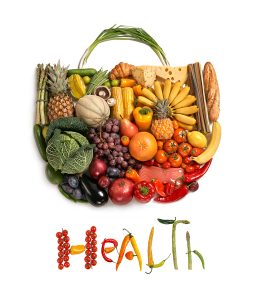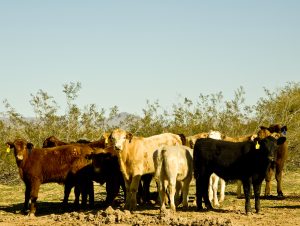By Heide Kennedy, Arizona Farm Bureau Communications Intern
Let’s face it. When you’re trying to maintain a healthy diet and only buy healthy food items, going to the grocery store can sometimes be hard. While there is nutritious food at the store, there are also shelves and shelves of sugary, carb-loaded junk food to tempt you. So, how can you ensure that when you go shopping, you stick to your guns and only buy the foods that you were intending to buy without caving to the inevitable junk food cravings? Read on to find out!

Woman shopping in a supermarket
Registered dietician Sherrie Shen provides the following tips and suggestions when it comes to sticking to your health goals while shopping at the grocery store.
Don’t shop while hungry
One of the most important tips Shen has is to not shop while you’re feeling hungry. Going shopping while you’re feeling like you could use a snack is a great way to make you more vulnerable to caving to temptation while at the store. When your stomach is empty, you’ll be more likely to buy yourself a snack and thus potentially ruin your health goals, depending on your snack of choice.
Use a list
Shen also advises that before you go to the store, stop and take inventory in your fridge, freezer, and pantry at home and make a list of the things that you need to replenish your stock. Try not to add extra items that you probably don’t need. Once you get to the store, only grab the items that are on that list and confidently walk right past the unnecessary extras. This also helps you to stick to your budget too!
Stick to the perimeter of the store
This tip from Shen really piqued my interest, as I had never really thought about it before, but I can see its truth after I think about it. She notes that in most grocery stores, all of the whole, real foods are located around the perimeter of the store. When you think about it, its actually true! The edges of the store is where you’ll find the fresh dairy, produce, meat, and bakery, while the center aisles are all filled with prepackaged foods. This makes it easier to just walk in, make your loop, and get out!
Read labels
Often when we buy foods, we don’t typically look at the labels on the back of the packages. But Shen advises that this becomes a grocery shopping habit, as it gives you a lot of good information concerning the healthfulness of that food product. You can see the list of ingredients, the amounts of carbohydrates, fats, sugars, protein, as well as the vitamin and mineral content, which all helps you to make an informed decision on whether or not to buy the product.
Sticking to your health goals while at the grocery store might be hard at times but is not impossible! Take a few proactive steps to make sure that you keep yourself from caving to those temptations and keep your fridge well stocked with healthy, nourishing foods!
For more health-related articles, check out the Fill Your Plate blog!






